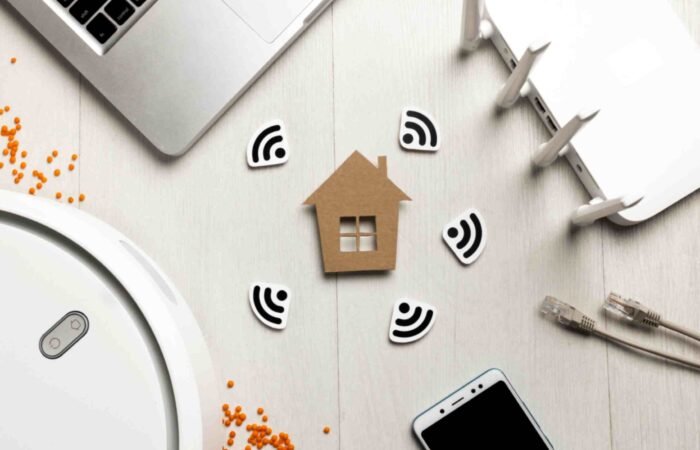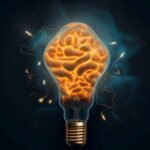You’ve probably heard the buzzword “Internet of Things” (IoT) thrown around a lot lately, but what exactly is it? Stick around, and you’ll discover the fascinating world of IoT – a network that enables seamless communication between people and “things” like devices, sensors, and everyday objects.
Key Takeaways
- The Internet of Things (IoT) is a network of connected devices that can communicate and exchange data over the internet.
- IoT has evolved from a concept to a rapidly growing reality, with billions of devices already connected and many more to come.
- IoT applications span various industries, including agriculture, healthcare, smart homes, and cities, transportation, and more.
- While IoT offers numerous benefits, it also faces challenges like security risks, data privacy concerns, and interoperability issues.
- The future of IoT promises exciting innovations and massive growth, but addressing its challenges is crucial for its successful adoption.
What is IoT?
Let’s start with a simple definition: The Internet of Things (IoT) is a network of physical devices, vehicles, home appliances, and other items embedded with sensors, software, and connectivity that enables these “things” to connect and exchange data over the internet.
In simpler terms, IoT allows various objects or “things” to collect and share data without human intervention. This concept enables seamless communication between people, devices, and systems, creating a connected world where almost anything can be monitored, controlled, or accessed remotely.
For example, you can use an IoT device like a smart thermostat to control the temperature in your home from your smartphone. Or a farmer can monitor soil moisture levels and adjust irrigation systems using IoT sensors in the field.
History of IoT
The idea of connecting devices and enabling communication between them has been around for decades, but it wasn’t until the late 1990s that the term “Internet of Things” was coined by Kevin Ashton, a British technology pioneer.
However, the origins of IoT can be traced back to the early days of the internet itself. Here’s a quick timeline of IoT’s evolution:
- 1970s: The first known instance of connected devices was the Coca-Cola vending machine at Carnegie Mellon University, which could report its inventory and whether the drinks were cold or not.
- 1980s-1990s: The concept of ubiquitous computing and the Internet gained traction, laying the groundwork for IoT.
- 1999: Kevin Ashton coined the term “Internet of Things” while working at Procter & Gamble.
- 2000s: RFID (Radio Frequency Identification) technology became more widespread, enabling wireless data transmission between objects.
- 2010s: The rise of cloud computing, big data, and advanced analytics, coupled with affordable sensors and connectivity, fueled the growth of IoT devices and applications.
- Today: IoT has become a rapidly growing reality, with billions of devices already connected, and many more expected in the coming years.
Notable figures who played a significant role in the development of IoT include Mark Weiser, the father of ubiquitous computing, and researchers like John Romkey and Simon Hackett, who developed some of the earliest connected devices.
Applications of IoT
The applications of IoT are vast and span numerous industries. Here are some examples of how IoT is being used:
1. Agriculture
- IoT sensors can monitor soil moisture, temperature, and other environmental factors to optimize irrigation and crop management.
- Connected farm machinery can be remotely monitored and maintained, improving efficiency and reducing downtime.
2. Consumer Applications
- Smart home devices like thermostats, security systems, and home assistants (e.g., Amazon Alexa, Google Home) are powered by IoT.
- Wearable fitness trackers and smartwatches collect and share data about your health and activity levels.
3. Healthcare
- IoT-enabled medical devices can monitor patients’ vital signs and transmit data to healthcare providers for remote monitoring.
- Smart pill bottles can track medication adherence and send reminders to patients.
4. Smart Homes
- IoT-connected appliances, lighting, and security systems allow homeowners to control and automate various aspects of their homes remotely.
- Smart energy management systems can optimize energy usage and reduce costs.
5. Smart Cities
- Connected traffic management systems can improve traffic flow and reduce congestion.
- Smart streetlights can automatically adjust brightness based on ambient conditions, saving energy.
6. Transportation
- Telematics systems in vehicles can monitor performance, track locations, and provide real-time diagnostics.
- Connected fleet management systems can optimize routes and monitor driver behavior.
7. Public Utilities
- Smart meters can remotely monitor and manage electricity, gas, and water usage.
- IoT sensors can detect leaks, monitor water quality, and optimize distribution networks.
8. Information Technology
- IoT devices can be used for asset tracking, inventory management, and supply chain optimization.
- Connected printers, scanners, and other office equipment can be monitored and maintained remotely.
These are just a few examples, and the potential applications of IoT are limited only by our imagination.
Challenges of IoT
While IoT offers numerous benefits, it also comes with its fair share of challenges that need to be addressed:
1. Security Concerns and Potential Risks As more devices become connected to the internet, the risk of cyber attacks, data breaches, and unauthorized access increases. IoT devices can be vulnerable to hacking, and compromised devices can be used for distributed denial-of-service (DDoS) attacks or to gain unauthorized access to networks.
2. Data Privacy and Management Issues IoT devices collect vast amounts of data, raising concerns about data privacy and management. There are questions about who owns the data, how it is stored and protected, and how it can be used ethically and responsibly.
3. Interoperability and Compatibility Challenges With a large number of IoT devices from different manufacturers and platforms, ensuring interoperability and compatibility can be a significant challenge. Standardization and common communication protocols are needed to enable seamless integration and data exchange.
4. Scalability and Infrastructure Limitations As the number of IoT devices continues to grow, scalability becomes a concern. Existing network infrastructure may not be able to handle the increased data traffic and connectivity demands, leading to potential bottlenecks and performance issues.
5. Cost and Budget Constraints Implementing IoT solutions can be costly, especially for small businesses and organizations. The upfront costs of hardware, software, and infrastructure, as well as ongoing maintenance and support, can be prohibitive for some.
Future of IoT
Despite the challenges, the future of IoT looks bright and promising. Here are some predictions and trends shaping the future of IoT:
1. Continued Growth and Adoption The number of IoT devices is expected to grow exponentially, with some estimates suggesting there could be billions of connected devices by the end of the decade. IoT adoption will continue to increase across industries as organizations recognize the benefits and potential value it can provide.
2. Emerging Trends and Technologies Advancements in technologies like 5G, edge computing, artificial intelligence (AI), and machine learning (ML) will drive new IoT applications and solutions. AI and ML will play a crucial role in analyzing the vast amounts of data generated by IoT devices, enabling real-time decision-making and automation.
3. Potential Applications and Innovations IoT will continue to enable new and innovative applications across various sectors. For example, in healthcare, IoT-enabled telemedicine and remote patient monitoring will become more prevalent, improving access to care and reducing costs. In smart cities, IoT will help optimize infrastructure, improve public safety, and enhance sustainability efforts.
4. Addressing Challenges and Limitations As IoT adoption grows, addressing its challenges will become increasingly important. Efforts will focus on enhancing IoT security, improving data privacy and management practices, establishing industry standards and protocols, and building robust infrastructure to support the growing number of connected devices.
Conclusion
The Internet of Things is a revolutionary concept that is transforming the way we live, work, and interact with the world around us. By enabling seamless communication and data exchange between devices, systems, and people, IoT is unlocking new possibilities and driving innovation across industries.
The future of IoT is not just about connected devices; it’s about creating a more interconnected, intelligent, and efficient world. As technology continues to advance, we can expect IoT to play an increasingly vital role in shaping our lives, from the way we manage our homes and cities to how we approach healthcare, agriculture, and beyond.
From smart homes and cities to agriculture, healthcare, and transportation, the applications of IoT are vast and continue to evolve. While challenges like security, privacy, and interoperability remain, the future of IoT promises exciting advancements and innovations that could reshape our world.








No Comment! Be the first one.